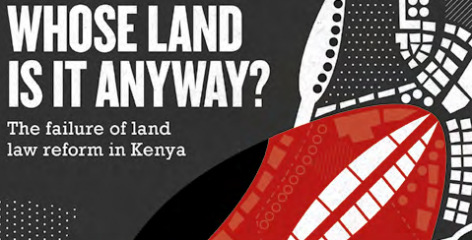Whose Land Is It Anyway? The failure of land law reform in Kenya
Off
Africa, Africa Research Institute, agriculture, allotment, allotments, Ambreena Manji, anti-corruption, ARI, ARI publications, British Institute in Eastern Africa, Cardiff Law School, Cities, Constitutional reform, corruption, corruption in kenya, Counterpoints, Daniel arap Moi, development, development in Africa, East Africa, Eastern Africa, Edward Paice, family law, formal property rights, human rights, inheritance law, inheritance law in Africa, injustice, Jomo Kenyatta, justice, Katiba Institute, Kenya, Kenya constitution, Kenya constitutional reform, Kenya Human Rights Commission, Kenya Land Alliance, Kenya law, Kenyans, Kenyatta, Land Committee, land corruption, land development, land governance, land justice, land law, land law in Africa, land law in East Africa, land law in Eastern Africa, land law reform, land legislation, Land reform, land rights, landgrabs, law, Law in Publications, legal, legislation, Ministry of Lands, Ministry of Lands and Settlements, Moi, MOL, morthage law, nairobi, National Land Commission, National Land Policy, National Social Security Fund, Ndung'u Commission, Ndung'u report, NLC, NSSF, Politics in Publications, President Jomo Kenyatta, private property, privatisation, property law, property rights, property rights in Africa, public land, rural, rural Africa, TJRC, Truth Justice and Reconciliation Commission, urban africa, urbanisation, Urbanisation in Africa, urbanization
Land is a “key fault line” in Kenya. Throughout East Africa land law reform has been pursued at the expense of substantive land reform. New laws have not been redistributive or transformative in a positive way.







